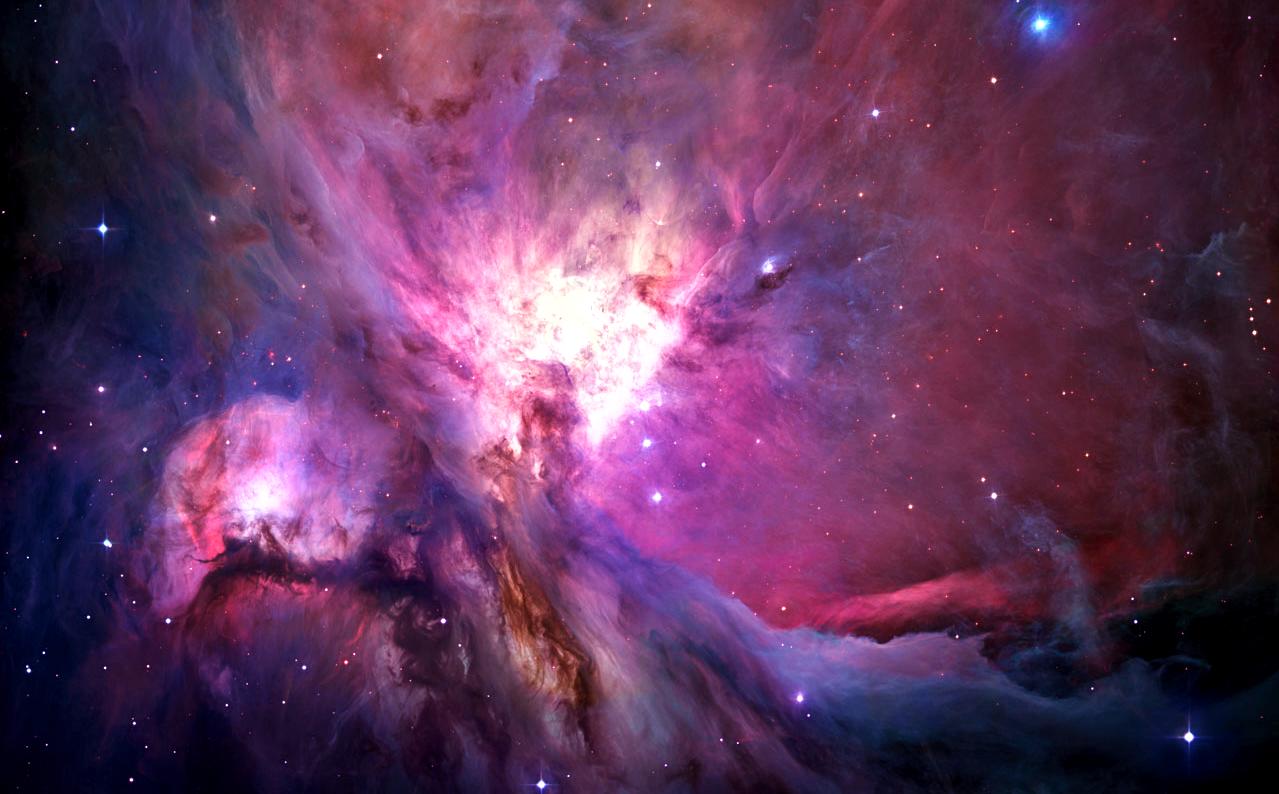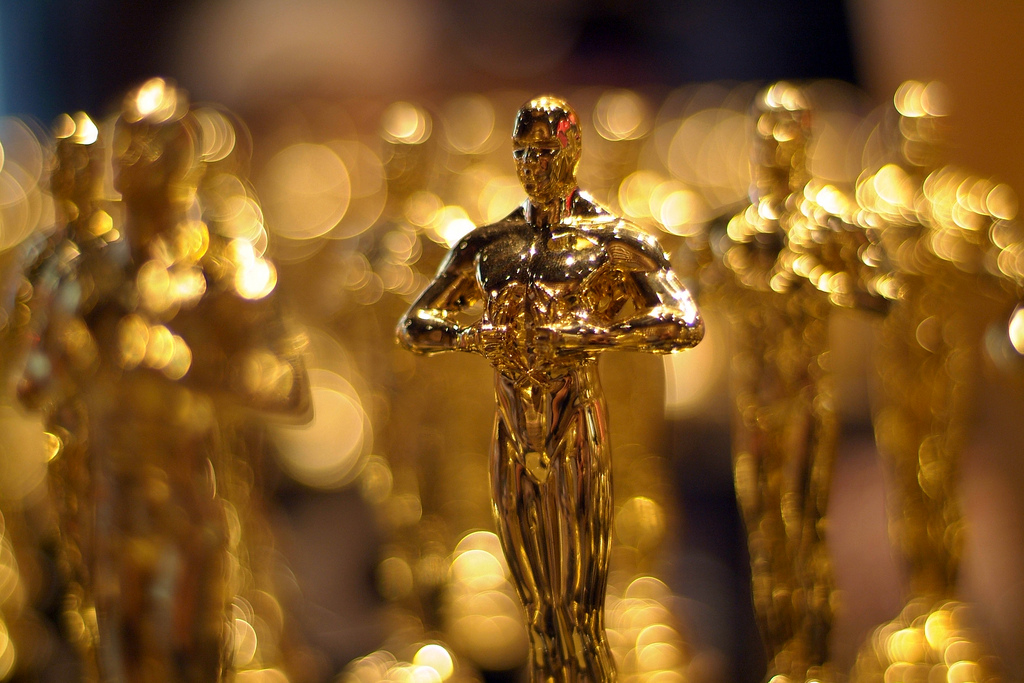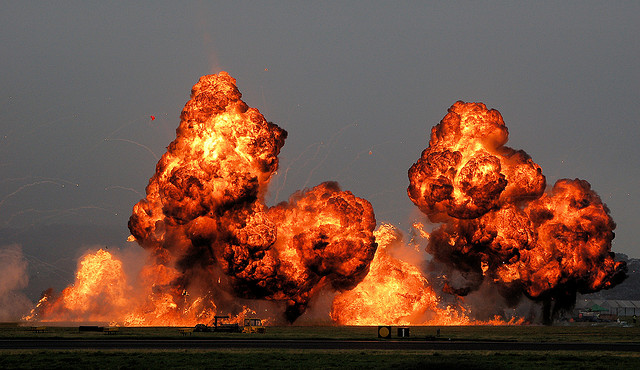What if Oscar Awards were made of antimatter?
The winners of the 87th Academy Awards have been finally announced. Carefully crafted Oscar statuettes have been handed out to the talented bunch that pleased movie critics the most and made the audience happy. Do you know what the Oscars are made of? How are they made? And, to stir the imagination and bring some physics in, what if they were actually made of antimatter?

Photo by cjhally6.
##What are the Oscars made of?
I am sure you know it’s not gold (nor is it bronze either). Not to blame the Academy for greediness, but if it were — the ceremony would cost a hell of a lot more money. To save a buck (or something like $200,000 per piece), the Academy’s “golden boys” that all nominees dream about are made of britannium — malleable alloy consisting of 92% tin, 6% antimony, and 2% copper. Just like a big 19th-century pewter vase, except for the fact that it’s covered with gold, fame, all sorts of accolades, and love of the millions of movie fans.

Photo by lincolnblues.
##What are antimony and copper added for?
To harden otherwise soft tin and to prevent what’s known as tin pest — the process that was likely to blame for the epic defeat of the Napoleon’s Army in a Russian winter campaign of 1812. In case you’ve never heard this story before — listen to the Yale’s material scientist and watch a piece of tin turning into dust:
##So how are the Oscars made, after all?
Bibbidi-bobbidi-boo! Or, rather, molding, polishing, and then electroplating each statuette with copper, nickel, and 24-carat gold. The latter process is nothing more but dipping two electrodes, one of which is the statuette itself, in the solution containing the wanted metal ions, switching on the power in the circuit and waiting for the statuette to start looking more expensive and glittery. Dip, take off, and repeat!
##What if the Oscars were made of antimatter?
Bah! Of course, I know that it’s not realistic, you skeptic! That antimatter, which is a twin of a regular matter with an opposite charge, is notoriously hard to produce and handle. And that the best we can currently do is to trap a bit of anti-hydrogen for less than half an hour:
But the whole point of the exercise was to think in the “what if” terms. After all, with a price of $62.5 trillions per gram, the antimatter Oscar would surely be the most expensive thing ever! Last year, one of the science bloggers gave his imagination a full play and came up with a story that would have surely won Oscar had it been nominated: Daniel Day-Lewis receiving the 8-1/2 pounds of “antimatter award”, the fiery explosion resulting from its annihilation, and the catastrophe devastating the world.

Photo by Bryan Burke.
As much as I enjoyed the story and the author’s brilliant sense of humor, I’d still disagree. Why give 8-1/2 pounds of antimatter to Daniel Day-Lewis, assuming we found a way to manufacture and handle that much? Let’s wait, scale it up and power the interstellar flight! After all, antimatter is an ideal starship fuel and the humanity (or, at least, the NASA scientists and the Star Trek fans) has long been longing for it.
Meanwhile, the awardees can have cookies — we can even make them Oscar-shaped.
See also

CASE STUDY - 8th Grade students at St Timothy's Catholic School use MEL Chemistry to enhance their science lessons
Saint Timothy Catholic School in Mesa is committed to promoting academic excellence in each child it looks after. They encourage self-discipline, self-respect, and respect for others. They understand the importance of engaging students in a comprehensive and relevant curriculum. As a result, the middle school science teacher from St. Timothy Catholic School is using MEL Chemistry subscriptions to enhance and expand their range of learning activities.

CASE STUDY - MEL Chemistry allowing pupils to reach their full potential
The Empower Learning Center is the Alternative Learning Program (ALP) within the Hinckley-Finlayson School District. They offer non-traditional education options for students ages 16-21 in their daytime program, night school for traditional high school students who need to make up credits, and night school for adults 18 and older who would like to complete their diploma or equivalency.
The school was seeking engaging, hands-on chemistry kits to make their science classes more interactive, and to help their students understand key science concepts and achieve their full potential in chemistry.

CASE STUDY - MEL Chemistry at Lund International School, Sweden
Emma Taylor, a science teacher at Lund International School (Sweden), has chosen MEL Chemistry sets as the best option for her students’ science classes. In Lund International School, all programmes are taught in English, and having chemistry sets in English are a great asset to accompany science classes.
Here, Emma shares her experience of how MEL Chemistry sets improved her students’ comprehension and understanding of science concepts.